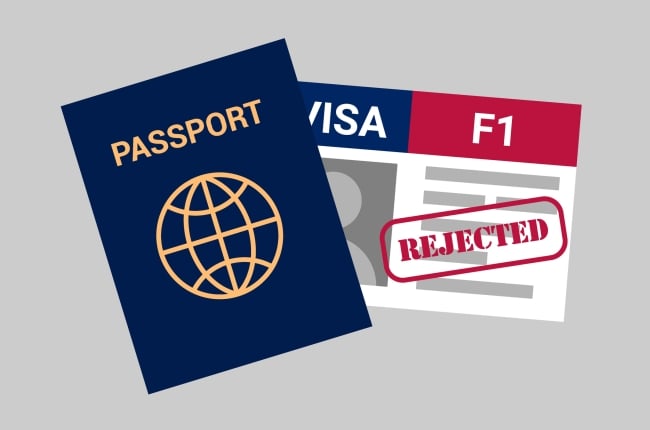You have /5 articles left.
Sign up for a free account or log in.

Olena Agapova/iStock/Getty Images Plus
Presidents are worried about immigration. As I interviewed leaders on campuses as part of my doctoral dissertation research on university leadership’s role in internationalization, the conversation kept turning to the topic. At all four institutions where I conducted research, university leaders were worried about recent international enrollment drops on their campuses, a decline they attributed in part to strict U.S. immigration policy.
Recent data shows that these presidents’ concerns are justified—U.S. immigration policy is becoming harder for students to navigate. A 2023 report from the Presidents’ Alliance on Higher Education and Immigration and the international education company Shorelight showed that between 2015 and 2022, international student visa denials to the United States grew significantly, both pre-and post-pandemic. Denial rates for students from Africa were the highest among world regions, with a whopping 52 percent of African applications rejected by the U.S. Department of State during the five year-period spanning 2018–2022. This denial rate means that more than 92,000 potential undergraduate and graduate African students were not enrolled at U.S. campuses. Moreover, the increase in visa denials did not correlate with an increase in student applications; the number of F-1 student visa applications has actually fallen in recent years, after its peak in 2014 and 2015.
The severe denial rates, particularly for students from Africa, have serious implications for U.S. colleges and universities. With Africa’s youth population on the rise, the U.S. cannot afford to miss out on coming generations of students interested in higher education. The New York Times reports that, as of 2023, African youth already make up about one-fourth of the world’s young people. By 2050, that share is predicted to rise to one-third. If the U.S. continues to deny African student visa applications at its current rate, then U.S. universities can expect increasing difficulty in engaging the world’s youth. The writing is already on the wall. While student visa applications to the U.S. have declined since 2015, other destinations such as Canada saw massive growth in international student enrollment.
With tens of thousands of potential students on the line, what can U.S. universities do to remain competitive? Many universities and organizations have turned to federal policy advocacy for answers, directly targeting U.S. lawmakers in Washington to facilitate international student enrollment, lobbying for changes such as the expansion of “dual intent,” which would allow prospective international students to express potential interest in remaining in the United States. (Currently, prospective international students must convince consular officials of their intent to return to their home country after finishing their studies, a factor at the root of many visa denials.) Other lobbying priorities include processing times for visa applications.
However, federal advocacy, by itself, may not be the most effective approach to achieving immigration policy change. University leaders should also consider building partnerships and alliances with state-level elected officials, such as governors and state lawmakers, who can serve as advocates for international education at the federal level. Because state officials are on the frontlines of local economic challenges, they are best positioned to understand the direct impact of international education in their communities.
According to the U.S. Department of Education, international students earned 35 percent of STEM master’s degrees and 41 percent of STEM Ph.D.s. in the U.S. during the 2021–22 academic year. National Science Foundation data also show that international students earn more than half of U.S. doctoral degrees in certain science and engineering fields, including 62 percent of doctorates in economics, 59 percent in computer sciences, 58 percent in engineering and 51 percent in mathematics and statistics. One university president I interviewed shared that 70 percent of the current graduate students in his institution’s college of engineering are international. Policies that jeopardize such a large percentage of U.S. STEM student enrollment could have a serious depressing effect on innovation, job creation and labor markets. State-level officials can easily understand the impact on their economies, especially if students are able to work in their state through programs like Optional Practical Training (OPT). The benefits of international student enrollment for U.S. communities and economies align closely with the political imperatives of state-level leaders. Therefore, advocacy about U.S. student immigration policy should be directed to these frontline lawmakers, not just to Washington.
In a time when immigration is front of mind for many in the U.S., university leaders can build connections with their state government officials, catalyzing those connections to advocate on behalf of international students at the federal level. Many university leaders, especially those at public institutions, already interact with state officials frequently. Why not add student visas as an agenda item during these discussions? We know that student visas and post-graduation opportunities influence international students’ decisions about where to study. We must act on that knowledge by partnering in advocacy with state governments. If we do not act, we risk the future of our institutions—and of U.S. higher education as a whole—to attract some of the best minds from around the world.




